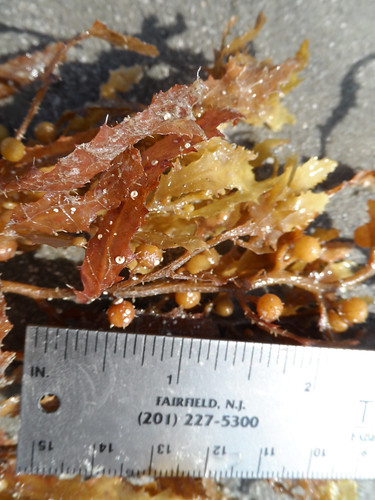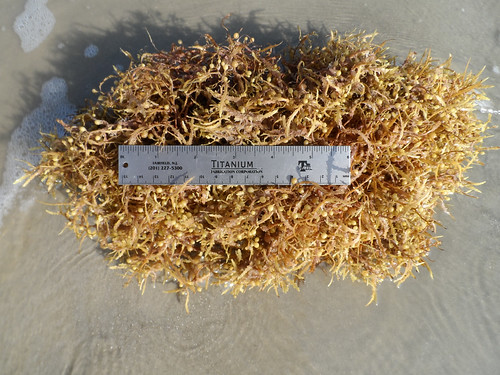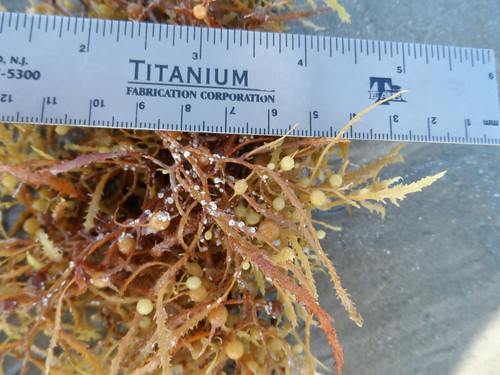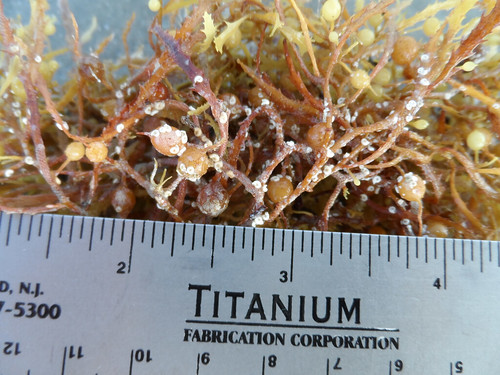Abundance: plentiful
What: all parts
How: cooked
Where: sea shore
When: spring, summer
Nutritional Value: calories and protein
Dangers: can be high in arsenic, which must be removed befor eating
Medicinal Summary:
Sargassum fluitans

Sargassum fluitans close-up

Sargassum natans


Sargassum natans close-up


Coating the Gulf Coast shores and floating in the Gulf waters, sargassum seaweed is generally considered to be a nuisance by beach-goers and city officials, but it plays a critical role in stabilizing beach sand when washed ashore. The seaweeds drifts in all year round but is heaviest during the summer. The floating clusters of sargassum are home to many creatures including tiny crabs, shrimp and other crustaceans.
Two forms of sargassum wash up on shores from Florida to Texas. To the untrained eye they look almost identical and since they are both edible, one doesn't have to be precise in their identification...though you should be. Sargassum fluitans generally has wide, short-stalked "leaves" and its pods usually are not tipped with small spikes. Sargassum natans has long, narrow "leaves" and its pods generally do have a single, tiny spike at the end opposite that attached to the main body.
All parts of sargassums are edible, including the numerous crustaceans that make this seaweed their home. It has a somewhat bitter flavor and is not considered to be as desirable as many of the more northern Pacific and Atlantic seaweeds. However, it is quite plentiful and a decent source of calories.
Please remember that sargassum is a vital part of a healthy, biologically diverse shoreline and on Galveston Island a permit is generally required to harvest any there.
Liver-protective properties: Quintal-Novelo C, Rangel-Méndez J, Ortiz-Tello Á, Graniel-Sabido M, Pérez-Cabeza de Vaca R, Moo-Puc R. A Sargassum fluitans Borgesen Ethanol Extract Exhibits a Hepatoprotective Effect In Vivo in Acute and Chronic Liver Damage Models. Biomed Res Int. 2018 Dec 20;2018:6921845. doi: 10.1155/2018/6921845. PMID: 30671467; PMCID: PMC6317085.
Buy my book! Outdoor Adventure Guides Foraging covers 70 of North America's tastiest and easy to find wild edibles shown with the same big pictures as here on the Foraging Texas website.

